Don't Miss
- NEW DVD Series – Stone Setting with Bezels
- Tube Set Charm by Kim St. Jean
- Prong Basket Pendant by Kim St. Jean
- NEW DVD Series – Stone Setting with Cold Connections
- New DVD Series – Stone Setting with Wire
- NEW DVD Series: Introduction to Stone Setting by Kim St. Jean
- Featured Tool: Bracelet Bending Plier
- NEW Dvd by Eva Sherman
- Fun, Fast Fold Forming DVD Series
- Double Band Ear Cuff from Alex Simkin
Using Clasps with Chain Mail
By Judy Ellis on February 26, 2016
by Judy Ellis, Wirejewelry.com
Wire Jewelry Article for February 26th, 2016
Using Clasps with Chain Mail
by Marilyn Gardiner
Today we have a great article by Marilyn Gardiner about using clasps with Chain Mail. If you love working with chain mail, you will love this information. Enjoy!
Marilyn says:
I have a love affair with clasps! Especially with ones that are beautiful, elegant in design, functional, and help make my jewellery special to wear. There are many different kinds and qualities of clasps. Here are some different kinds and their pros and cons.
- Hook-and-Eye or S-Hook Clasp:
- These two clasps are similar in that one end of your chain will have a hook, and the other end will have a round link for the hook to go through. The round link could be a jump ring (often soldered), a split ring, a figure-8 link, or even the ring part of a toggle clasp.
- There are multi-strand variations of this clasp. Both the hook and the eye are attached to a flat, decorative rectangle that has a row of small rings that get connected to multiple strands of a bracelet or necklace.
- These clasps are rather easy for the user to fasten.
- Spring Ring Clasp:
- This round clasp opens by pulling back on a lever—then a round link is inserted into the opening. When you let go of the lever, it closes. To see options for the round link, read the Hook-and-Eye clasp description.
- This clasp is functional and secure, but can be somewhat difficult do connect using one hand, as with a bracelet.
- Lobster Clasp:
- The lobster clasp is similar to the spring ring, in that to open it and close it, you pull the lever (like a trigger), insert the ring, and then let it go. The “ring” is a round link of some sort at the other end of the chain. Read the Hook-and-Eye for some options for the “ring”..
- This clasp can be small and modest, or larger, and even somewhat decorative.
- It can also be moderately difficult to join using one hand, as for a bracelet, but it is very safe.
- Dexterity Clasp:
- The dexterity clasp is a variation of a clasp that hooks into a ring. To open the clasp, pinch the ends together—then slide it onto the ring part and release the pinching. An intriguing design!
- This clasp is unobtrusive, fairly easy to do up, and quite secure.
- Snap Clasp or Trailer Hitch Clasp:
- The snap clasp looks and works something like a trailer hitch, and is very secure. The open ring part pushes down over the part with a ball.
- It’s very functional but unpretentious in appearance, and not too difficult to connect with one hand.
- Toggle Clasp:
- The toggle clasp has 2 parts, a ring part is attached at one end of the chain and a bar part at the other end. To close the clasp, the bar is turned sideways and pushed through the ring. To allow room for this to happen, the bar part requires a short length of one-in-one chain connecting it to the end of the main jewellery chain. Usually 3 to 5 small jump rings linked together will do this.
- Toggles can be plain and unassuming, or they can be very decorative and artistic.
- They are fairly easy to connect with one hand. There is typically a single connecting ring on each part, but there are some 2-strand toggles available.
- Slider or Tube Clasp:
- This clasp has two tubular parts that connect to each end of piece of jewellery. One end slides down over top of the other end. Usually it is friction (a close fit) that holds the parts together, but sometimes there is a magnet inside to help.
- These are multi-strand clasps, and they can be used to connect 2, 3, 5, or more chains. I’ve even seen one for 9 strands.
- There is an elegant variation of this clasp with rectangular shaped tubes that slide one into the other.
- Magnetic Clasp:
- Magnetic clasps have a bad rep for not being dependable. They can pull apart when putting on or taking off clothing, they can attach to metal objects such as filing cabinets, and the glue holding the magnets in place can fail.
- However, newer variations have been designed to prevent these problems. They have really strong magnets, and some are designed with ridges so they don’t just sideways to open.
- They are worth a second look because they are really easy to do up, and are loved by anyone who has difficulty connecting other clasps. Look for some very beautiful and blingy ones!
- Fold-over Clasp:
- Most of us are familiar with this concept because some watches have this kind of clasp—one end of the clasp folds over the other end (which may be a ring or a bar) and snaps closed.
- These clasps can be tiny and inconspicuous, or they can be a decorative focal point. They are relatively easy to fasten.
- Box Clasp:
- Box clasps come in two parts: one part has a tongue that fits inside the other part. They are easy to do up, but, if they don’t have a safety latch, can pull apart. A solution is to add a safety chain—a delicate chain that attaches to both parts of the clasp, but allows enough room to slip over one’s hand. (Some watches come with safety chains—this is the same idea.)
- These clasps can be small and unobtrusive, but most often are beautifully decorated and designed. Think inlays, bezels with pearls or gemstones, and decorative metalwork.
- They can also be quite large, for chunkier pieces, and often come in multi-strand versions.
I hope that you’ve learned a few things about clasps and feel like you can make a more educated choice for your next project!
Happy Wrapping!
![]()
Click to Receive Daily Tips by Email






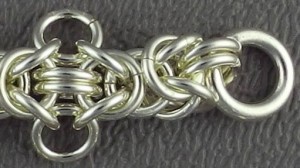
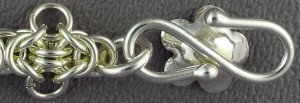
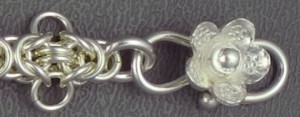
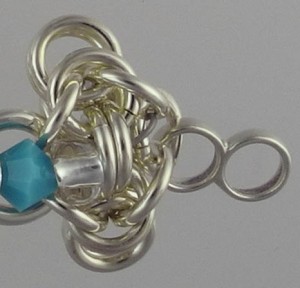
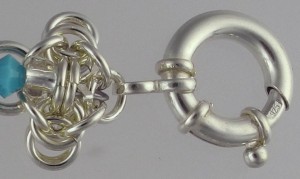
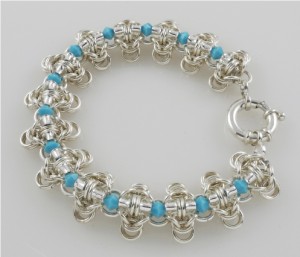
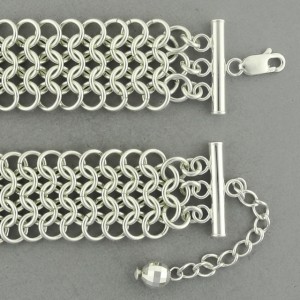
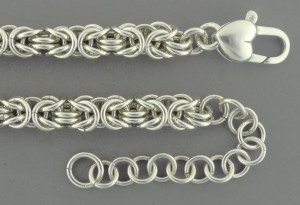
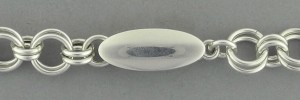



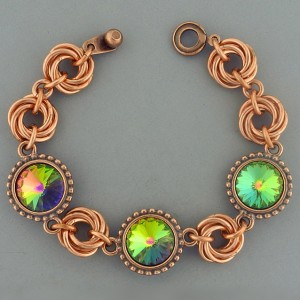
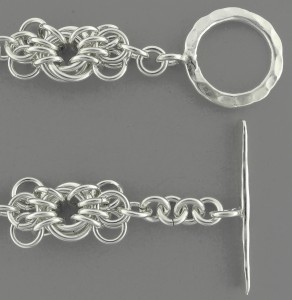
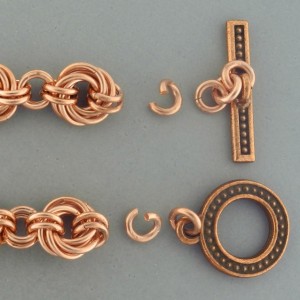
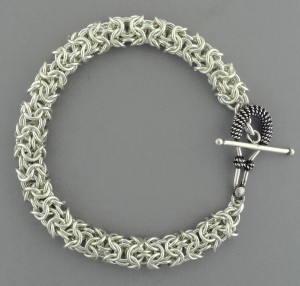
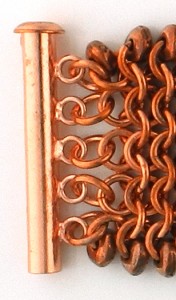
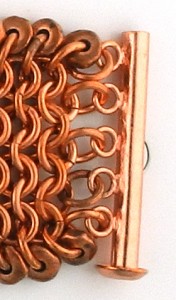
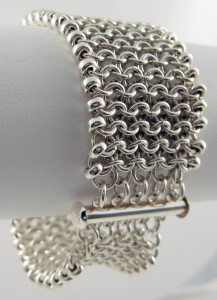
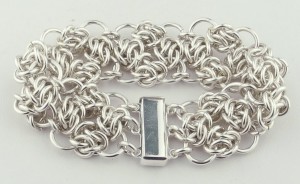
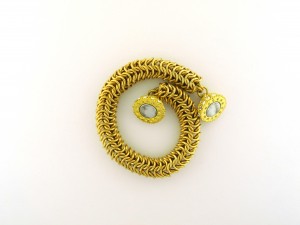
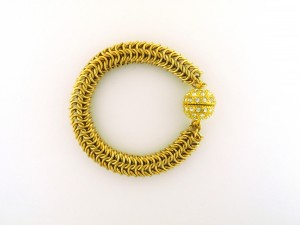
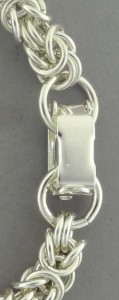
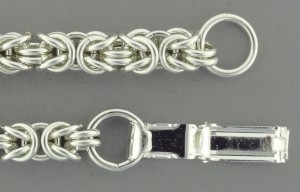
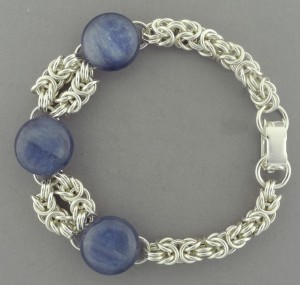
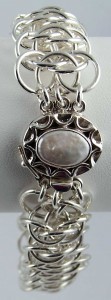
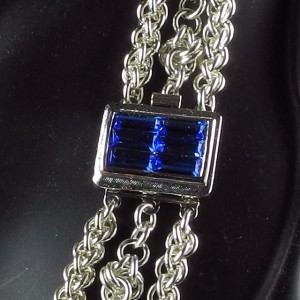
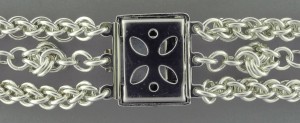
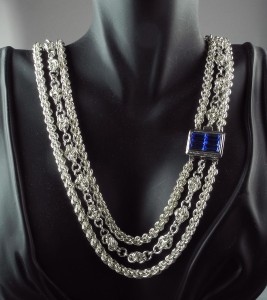
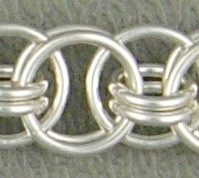
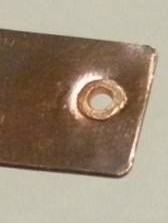
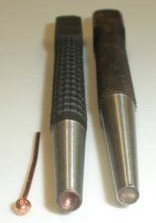
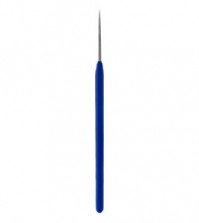














Beverley Henderson
February 26, 2016 at 12:02 pm
The biggest problem I have found with snap clasps is they are pulled apart to open so great pressure is placed on the attachments. If possible, get a clasp of this type that has some means of unfolding it or lifting the two pieces of the clasp apart. If you don’t, people will pull one end of the bracelet itself and eventually this guaranties a break.
Stephania
February 28, 2016 at 12:08 pm
Great article with lots of useful information. Thanks, Marilyn.